| Global Monthly Update October 2020 | | Meeting Aims to Improve Strategies for Surveillance of Medical Products Since the COVID-19 pandemic began, FDA has identified 1,186 counterfeit products claiming to diagnose, treat, or remediate the virus and the number of fraudulent products just continues to grow. Unfortunately, COVID isn't the only category of counterfeit products that flood the market every year, potentially harming patients and undermining confidence in medical products, healthcare professionals and health systems. That's why combatting substandard and falsified medical products remains a high priority for the FDA.  Many of these products are imported into the United States, therefore one way FDA has been addressing the problem is by working with other global regulators on strategies for detecting these products and controlling their distribution. Recent outreach including meeting with other global regulators on unsafe hand sanitizers that used potentially toxic levels of methanol or 1-proponal as an active ingredient rather than alcohol (ethanol) or isopropyl alcohol (also called isopropanol or 2-propanol). This week, Associate Commissioner Mark Abdoo, as the U.S. delegate and co-chair for Americas region, participated in the 9th meeting of the WHO Member State Mechanism on Substandard and Falsified Medical Products, which was attended by about 75 countries. The Mechanism was established by the World Health Assembly in 2012 to address the problem of substandard and falsified (SF) medical products, which are not only found in all main therapeutic categories but in every global region. Data collection to better identify the scope of the problem has been one of the goals of the Mechanism since its founding. In 2013, WHO launched the Global Surveillance and Monitoring System to encourage countries to report SF incidents in a structured and systematic format and to help develop a more accurate and validated assessment of the problem. The system provides technical support to help regulators address and respond to SF medical product issues; links incidents between countries and regions; issues WHO medical product alerts; gathers a validated body of evidence to more accurately demonstrate the scope, scale and harm caused by SF medical products; and identifies vulnerabilities and trends. Regulators in 141 countries have been trained to detect and respond to SF products and 1,500 SF products have been identified with the most (42 percent) coming from the WHO African Region. Since 2013, WHO has issued over 30 global medical product alerts as well as many regional warnings and provided technical support in more than 100 cases. Over the years, countries have begun to adopt screening technology, such as hand-held detectors, that can quickly identify SF products. 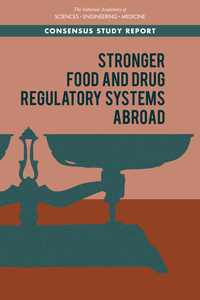 | | At this year's meeting, Associate Commissioner Abdoo highlighted the findings of a report released in January by the National Academies of Sciences, Engineering, and Medicine entitled, "Stronger Food and Drug Regulatory Systems Abroad." That report, commissioned by OGPS, discussed the risks of informal markets for medicines. Pharmacies may be scarce in some parts of the world, opening the door to vendors who are often not qualified to dispense medicines and who may sell uncertain quality stock. | FDA has a cooperative agreement in place with WHO to help support activities to prevent, detect and respond to SF medical products. The Agency continues to work to minimize the impact of SF medical products globally and works closely with regulators to highlight this important public health issue. Building Trust and Communicating Science and Risk Effectively How best to communicate science and risk was the focus of an October webinar co-hosted by the FDA and the European Food Safety Agency (EFSA), the agency tasked in the European Union (EU) with assessing and communicating food safety risks. The audience for an Oct. 28 webinar consisted of risk managers and communicators from the international food safety regulatory community, who were invited to participate. The FDA's Europe Office (EO) played an instrumental role in co-sponsoring this event with the EFSA, which explored the topic of the fragility of trust in regulatory science and the challenges, opportunities, and the prospects for effectively communicating important concepts related to health risk both to stakeholders and the public. 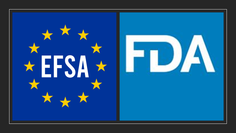 | | The keynote address was presented by Prof. Michael Siegrist from the Swiss Federal Institute of Technology in Zurich, who discussed research on the various ways in which the public defines the concept of trust. | In opening remarks, EO Director Ritu Nalubola noted that "as regulators and scientists, we are not always effective communicators and the science underlying regulatory decisions is not necessarily simple to explain or to understand and is subject to being oversimplified, misunderstood or misinterpreted. This can lead many people to form opinions about our regulatory decisions that are based on incorrect or incomplete information," she said. "In the current context of the pandemic, however, the need for a global discussion to begin to address this challenge is ever more important." FDA has a long collaborative history with EFSA in risk assessment and risk communication of both human and animal foods and both have conducted research to better understand and communicate with the public. | |  | The EFSA performs risk assessment activities for both foods and agriculture-associated environmental factors and routinely reports their findings and opinions on their website. In 2018 they published an external scientific report regarding emerging food safety issues and "what do consumers want to know?" — findings regarding the what, when, and how. The insights from the over 6,200 EU consumers surveyed revealed that the public prefers to hear about emerging risks as they are first identified, even when still scientifically uncertain. At the Oct. 28 webinar, communication experts from the FDA's Center for Food Safety and Nutrition (CFSAN) discussed three recent case studies to demonstrate what FDA has done to help consumers and other stakeholders make informed decisions about FDA-regulated products. The case studies included FDA's exhaustive consumer and stakeholder outreach during the implementation of the FDA Food Safety and Modernization Act; the agency's communication and outreach on toxic metals in food, including arsenic in rice; and CFSAN's Feed Your Mind initiative unveiled in March, designed to help consumers better understand genetically engineered foods, commonly called GMOs or genetically modified organisms. The FDA and the EFSA may consider additional activities, as appropriate, as a follow-up to the webinar, after considering input and interest from our regulatory counterparts. | | FDA, Mexican Counterparts Enhance Food Safety Partnership 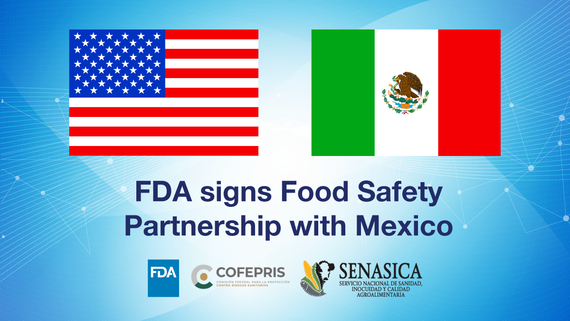 The FDA and Mexico have been formally working collaboratively on fresh produce safety since 2014 under the Produce Safety Partnership SOI. The new SOI, referred to as the Food Safety Partnership (FSP) has been updated to collaborate not only on the prevention of foodborne disease from fresh produce but all human foods. In addition, it embraces the use of new and emerging technologies, leverages food safety programs at SENASICA and COFEPRIS and their work with local industry, and further enhances the collaborations of U.S. and Mexico with other key partners, helping to ensure a strong and resilient food system. 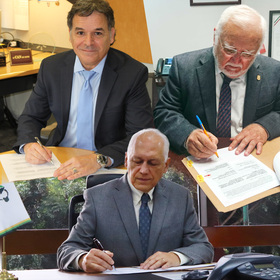 | | Top left – right: FDA Deputy Commissioner for Food Policy and Response Frank Yiannas; COFEPRIS Federal Commissioner José Alonso Novelo Baeza; Bottom: SENASICA Director in Chief Francisco Javier Trujillo Arriaga | FDA relies on strong partnerships with foreign governments, industry, academia, and nongovernmental organizations to achieve its mission in Latin America. The OGPS Latin America Office (LAO) was instrumental in bringing the agreement to fruition. LAO Deputy Director Michelle Rodriguez and International Relations Analyst Kenneth Nieves helped to coordinate the complex logistics for the Oct. 5 signing ceremony, which had to be conducted virtually. "Through this new partnership, the FDA, SENASICA, and COFEPRIS will enhance our level of collaboration to strengthen food safety and leverage new approaches that further protect consumers in both the U.S. and Mexico," said FDA Deputy Commissioner for Food Policy and Response Frank Yiannas, who signed on behalf of the FDA. Under the previous SOI, much of the collaborative work occurred through working groups under confidentiality commitments already established with Mexico food safety authorities since 2004. The FSP establishes a new governance structure that creates four work groups, streamlines their work, improves information flow and provides more specific guidance. The four work groups are: Strategic Priorities, Laboratory Collaboration (including whole genome sequencing), Outbreak Response and Prevention, and Food Safety Training. About one-third of all imported food into the U.S. is from Mexico and 60% of all imported produce is from Mexico. As a result, the FDA, SENASICA, and COFEPRIS work closely together on food establishment inspections and responding to foodborne illness outbreaks, as well as developing and implementing plans to enhance food safety in other areas of mutual public health interest. International Cooperation on Food Safety | | Quality Management Maturity Pilot Program Elevates Assurance for APIs Last year, CDER proposed a Quality Management Maturity (QMM) program as one solution to address drug shortages by incentivizing industry investments in continuous improvement and early detection of supply chain issues. QMM can be thought of as "a measure of the consistency, reliability, and robustness of business processes established and maintained to achieve quality policies and objectives, including a focus on continual process and system improvement," as described by the FDA's Center for Drug Evaluation and Research (CDER), Office of Quality Surveillance. 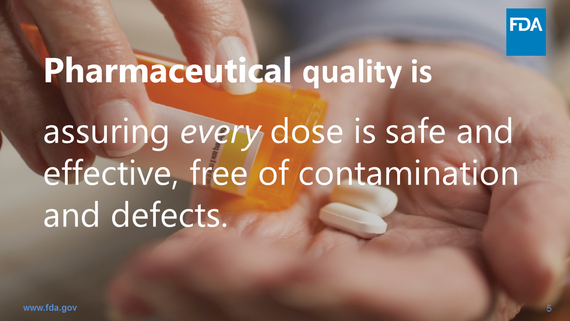 | | A transparent method of evaluating, characterizing, and communicating, QMM is needed to fully realize the FDA's modern pharmaceutical quality vision. Toward that end, the FDA announced the start of the QMM API Pilot Program in the Federal Register in October under Docket No. 85 FR 65828. Under this pilot program, a third-party contractor, identified by the FDA, will assess quality management systems for foreign active pharmaceutical ingredient (API) manufacturing facilities, accompanied by FDA staff. The Agency will gain insight from the results of the QMM assessments to inform the development of a rating system to measure and rate QMM. The FDA encourages industry to seek Quality Management Maturity within their operating systems, and company cultures. This will help both FDA and industry. For FDA, it provides additional insight into the state of quality of products and facilities; enhances risk-based allocation of surveillance tools; improves effectiveness of inspections; helps identify factors leading to supply disruptions; identifies policy and outreach opportunities; and supports data-driven decisions regarding regulatory flexibility under international standards, specifically, International Council for Harmonisation of Technical Requirements for Pharmaceuticals for Human Use (ICH) Q12: Technical and Regulatory Considerations for Pharmaceutical Product Lifecycle Management. For industry, embracing QMM is an important element of oversight and control that enables continual improvement of process performance, product quality, and the greater pharmaceutical quality system. Achieving the standard of "maturity" in quality management practices supports fewer recalls, quality system efficiencies, cost savings and regulatory flexibility. It enables systems to manage supply and demand variability and potential manufacturing disruptions and can improve corporate image and potential competitive advantage. Assessments under the QMM API Pilot Program will cover multiple topics. Examples include but are not limited to: supply chain management; manufacturing strategy and operations; safety, environmental, and regulatory compliance; performance management and continual improvement; risk management; and quality culture. Foreign manufacturers of APIs, or drug substance intermediates used to produce APIs, who are interested in participating in the QMM API Pilot Program, should review the Docket for participation details. This includes selection criteria, what to include in your request, and contact information. Requests for participation will be accepted through Nov. 30, 2020, and the Pilot itself will run through Dec. 31, 2021. | | Memorandum of Understanding Signed to Enhance U.S. Dairy Exports | |  | | The FDA and the United States Department of Agriculture (USDA) signed a Memorandum of Understanding (MOU) on Oct. 1, outlining greater coordination to facilitate the export of milk and milk products from the United States. | Under the agreement FDA and the USDA's Agricultural Marketing Service (AMS) and Foreign Agricultural Service (FAS) will collaborate on specific country certificate requirements with FDA, maintaining the listing of facilities eligible to export and working with USDA to assess opportunities to develop an electronic platform for sharing information more efficiently. U.S. dairy exports are valued at nearly $6 billion annually. FDA is the competent authority providing regulatory oversight of programs that cover U.S. dairy facilities, ensuring the safety of milk and milk products, while the USDA, through its dairy grading service, is the lead agency on issuing dairy sanitary certificates, coordinating interagency collaboration related to U.S. exports of milk and milk products, and negotiating with foreign countries on certifications to meet their importing requirements. "The rising trend by trading partners requesting additional information and assurances from dairy exporters requires an exceptional level of coordination by government authorities to address and facilitate requests," said FDA Deputy Commissioner for Food Policy and Response Frank Yiannas. | |  | USDA's Agricultural Marketing Service (AMS) is the lead agency providing export-related services for milk and milk products. It issues more than 55,000 dairy sanitary export certificates annually to more than 125 countries. FAS remains the lead authority for international negotiations on trade of milk and milk products. | | A Consumer Safety Officer's Experience in the Mexico City Post This story previously appeared in its entirety in an internal publication via the Office of Regulatory Affairs (ORA). A special thanks to Janete Oliveira and our staff in the Latin America Office for this submission.  | | Growing up in Brazil [Portuguese], I always knew I had an affinity for languages and other cultures. At age 8, I learned English. At age 18, I moved to Missouri to go to college. In college, I met people from all over the globe and learned a third language: Spanish. After college, I worked as a clinical lab scientist for 13 years in two different hospitals in Kansas City, Missouri. In 2009, I finished my master's degree in public health, and I decided I wanted to change careers. | I switched from a life within the four walls of a hospital's clinical lab to the countless opportunities of the FDA, where I began my new career as a consumer safety officer (CSO) in the former Kansas District office (now Human and Animal Food West 2). That same year, I learned about the foreign offices FDA was opening. I set a new goal: to serve in one of these foreign offices sometime during my new career. After taking numerous FDA courses, performing domestic operations and investigations, volunteering for several foreign trips for five years to understand how to perform FDA duties overseas, and performing a two-month detail in the FDA China post, the opportunity to fulfill this objective finally arrived: A CSO vacancy opened in the Latin America Office in 2016. With the blessing of my family and the confidence I was prepared to take the leap, I applied for the job in Mexico City. I was offered the job during the first of two interviews. I was elated, to say the least! Living in Mexico has been the most culturally rewarding experience of my lifetime. Mexican culture is a melting pot of thousands of years of advanced indigenous Pre-Hispanic civilizations combined with Spanish culture. This makes for an amazing country and capital city. Today we can find ruins of pyramids and temples unknown to the Old World until the early 16th century. The country has endless sources of leisure, cultural, and adventurous activities, and sites to explore all year round. Well known for its turquoise blue beaches in the Yucatan peninsula and Baja California, Mexico has all that and much more to offer. The presence of the Aztecs and Mayans can be noticed just about anywhere you see ruins of pre-Hispanic temples and cities, which were clearly built to endure time (and earthquakes!). Small towns called "pueblos mágicos" (magic towns) are all over the country. These 121 towns have received such formal government designation for their effort to preserve Mexican history, traditions, and architecture. They transport visitors through Mexico's history with their colonial churches, pre-Hispanic ruins, surrealist gardens, museums, mountain-top temples and sanctuaries, and gastronomic traditions dating back to centuries. I have been fortunate enough to have visited a few pueblos mágicos through my work travels, or in my new free weekends, which I did not always have as a busy homeowner in the U.S. Mexico City is the largest city in the Western Hemisphere, with a population of approximately 25 million people. Life here is fast-paced. Traffic and pollution are the two things we learn to cope with firsthand as we start this journey. However, the amazing gastronomic scene and the friendliness of the Mexican people offset these two challenges quickly. Not to mention, Mexico City's altitude is about 7,300 ft, which provides low humidity and pleasant average temperatures between the mid-50s and low 80s most of the year. Our office is small with six people: our deputy director for the Latin America Office, an international relations specialist, three Mexican National support staff (the most important people in this office), and me. 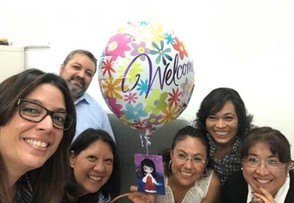 | | The staff at FDA's Latin America Office, Mexico City post: left to right, back row: International Relations Specialist Ken Nieves; Consumer Safety Officer Janete Oliveira. Left to right, front row: LAO Deputy Director CDR Michelle Rodriguez, Ph.D.; International Regulatory Analyst Patricia Pineda; International Regulatory Analyst Ana Lilia Sandoval, Ph.D.; Administrative Assistant Patricia Oliva. | The CSO responsibilities in the Mexico City post transcend inspectional work. We are also under the State Department and the chief of mission/ambassador's authority. Part of my duties include diplomatic activities to build rapport with our counterparts in Mexico. At times, I must attend meetings with high-level officials of these foreign agencies to support our team with activity-planning and information exchange. These activities may have either an educational or inspectional nature, and they leverage our food-safety mission in the host country. Some of the activities I participated in FY19 were related to the implementation of the new Produce Safety Rule. For example, I assisted our team with the first On-Farm Readiness Review tour in Mexico which took place in May 2019. This was an educational activity in the field, where farmers, FDA Produce Safety Network experts, Mexican regulators, and produce associations joined forces to educate local farmers about the new rule. As part of my inspectional duties, I plan and coordinate with the Division of Foreign Human and Animal Foods Operations the Latin America Office's inspectional workplan in Mexico, based on the Agency's needs. In addition, I strategically engage with ORA to improve planning and execution of inspections in high-risk security areas throughout Mexico. I also assisted and accompanied ORA Produce Safety Network CSOs during the first ever international produce inspections in Mexico in April and May 2019. Before these inspections take place, I provide logistics assistance to the travel coordinators so the CSOs have all the security provisions they need to travel to areas of Mexico where precautions are applicable. During the inspections, I provide linguistic support, as well as any other needed inspectional support. I am tasked with bringing back to the office intelligence information from the inspections I perform alongside our foreign counterparts and from other activities in the field. FDA uses this information to assist with policy-building in the region. Foodborne outbreaks often occur during the Mexico summer. In Aug. 2019, during the Salmonella outbreak in papayas from Mexico, I was summoned to join an investigational team of two other CSOs and one analyst who were deployed from three different ORA offices. Coincidently, the involved farm was the same one I visited with our Mexican counterparts in 2017 during another Salmonella outbreak in papayas. The knowledge I gained in 2017 of the farm and the region where it was located proved to be advantageous for the execution of our assignment in 2019. Oliveira receiving one of two awards signed by the U.S. Ambassador to Mexico, Christopher Landau, and presented by the Deputy Chief of Mission John Creamer Dec. 2019. This was a Meritorious award for her inspectional collaboration with FDA's Produce Safety Network during their first ever International produce inspections. | | 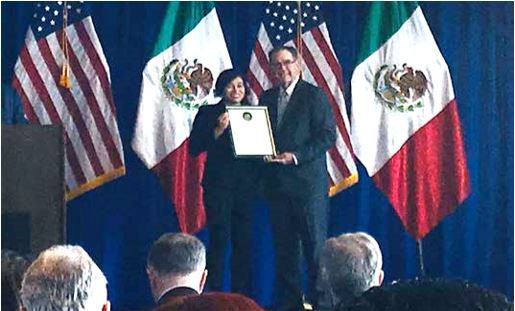 | Under the purview of the State Department, I occasionally represent our FDA office in meetings with high-level officials in the U.S. Embassy. These meetings may range from a report of agency activities to any other topic the ambassador needs to know about to make decisions. This experience has shaped my career in a way I would have never imagined. I have been exposed to ambassadors, high-level foreign authorities, worked alongside FDA counterparts in outbreaks of national significance, assisted in the implementation of preventive control inspections and the produce safety rule in Mexico, just to name a few accomplishments. The current challenge I face in my career is to answer this ever-burning question: what's next? Many doors may open as a result of this career leap. I hope these doors will lead me to the next objective, whatever it may be. If you are looking for a challenge which can measure up to the level of growth you have been yearning in your career, then a foreign post in the Latin America Office could be the place for you. OGPS' all-hands on deck efforts since the start of the COVID-19 pandemic were saluted in two speeches by OGPS leaders this last month.  "By FDA standards OGPS is a relatively small office, with a very broad portfolio, but we're staffed with talented public health professionals who are dedicated to working with regulatory partners to promote the health and safety of the American public," Associate Commissioner Mark Abdoo said during a panel discussion on The Global Economy of FDA-Regulated Products Under Stress, on Oct. 6, during the Food and Drug Law Institute's annual meeting. "Our continuous interactions with other regulatory authorities have been essential to ensuring not only a sense of partnership among regulators around the globe, but also ensuring transparency as to how each of us is approaching the regulatory challenges of this pandemic." Other participants during the panel discussion included Benjamin L. England of Benjamin L. England & Associates LLC/FDAImports.com, LLC; John A. Murphy of the Biotechnology Innovation Organization; Kimberly A. Trautman of Medical Device International Services, NSF International. 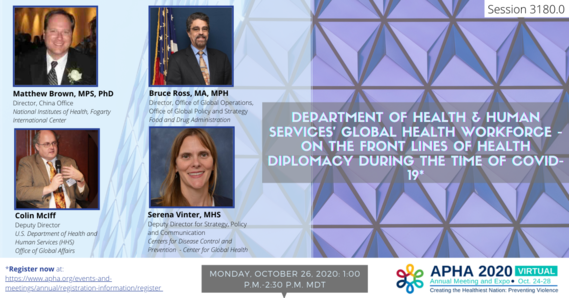 Bruce Ross, who oversees our foreign offices as director of OGPS' Office of Global Operations, sounded similar themes during his Oct. 27 speech at American Public Health Association's (virtual) annual meeting. He drew on the long list of COVID-19 activities reported by the various offices as part of their end of fiscal year achievements. For example, "when a country went into lockdown and shut down internal travel, one of our investigators was left stranded, away from her home and direct embassy support for over 5 weeks, while conducting a mission-critical inspection of a firm producing an [active pharmaceutical ingredient] (API) for a drug in shortage," he recalled. "While navigating local COVID-19 restrictions where they live and work, FDA personnel in China, India, and Latin America have been on the front lines leading bilateral exchanges of information." In addition, "our staff has assisted in embassy-led supply chain taskforces, advising Country Teams about FDA-regulated commodity sources in-country that could meet the shortages of PPE or to identify alternate suppliers by reviewing documents and manufacturing records available to support various U.S.-based procurement initiatives," he said. And even in these difficult times the staff has not abandoned its non-COVID related public health initiatives such as the work we do to protect the food supply from unsafe imported food or ensuring the safety and effectiveness of imported medical products. Ross participated on a session entitled Department of Health and Human Services' Global Health Workforce – On the Front Lines of Health Diplomacy During the Time of COVID-19. Other participants included Colin McIff, deputy director of the Department of Health and Human Services' Office of Global Affairs; Serena Vinter, deputy director for strategy, policy and communication in the Centers for Disease Control and Prevention's Center for Global Health; and Matthew Brown, director of the China Office for the Fogarty International Center of the National Institutes of Health. Transitions Welcome 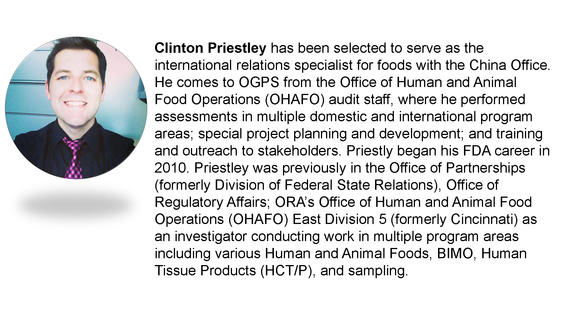 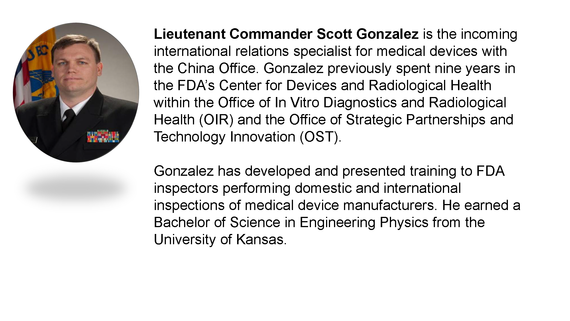 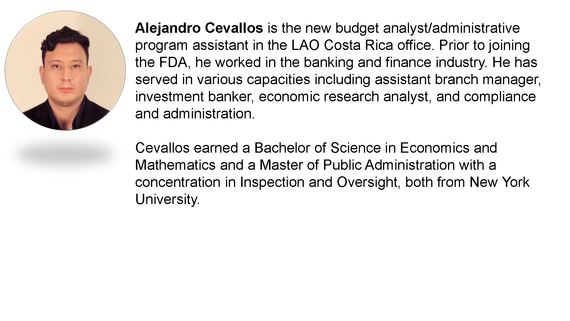 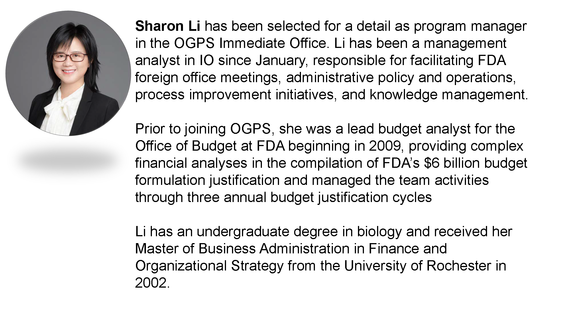 Departure 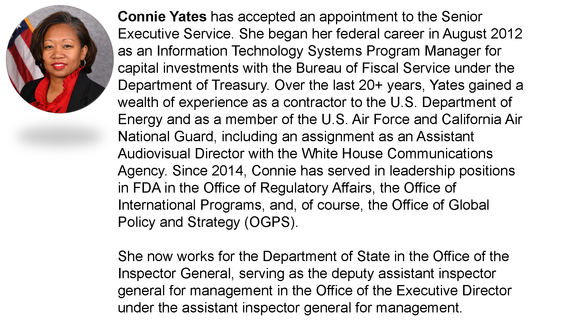 | | | Lane Christensen, an international program and policy analyst in our China Office (CNO) was chosen to deliver the plenary at the 2020 International Society for Pharmaceutical Engineering (ISPE) – China Center for Food and Drug International Exchange (CCFDIE) Annual Meeting in Nanjing, China on Oct .14-16. 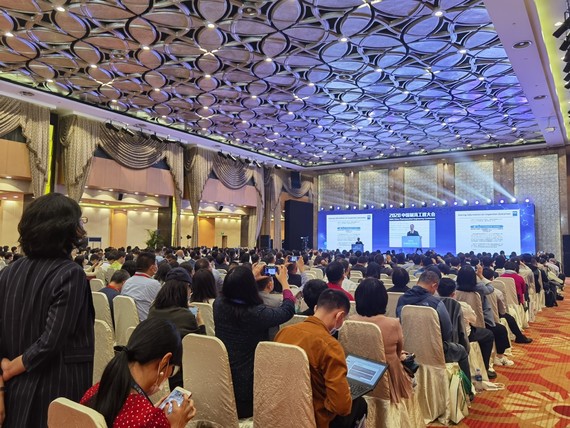 | | Christensen's talk was entitled, What Happened in 2020: Updates from the US FDA. Christensen also participated in the meeting's Overseas Regulatory Update session in a presentation entitled, Observations and Updates from the US FDA. Ensuring that both regulators and industry in China are familiar with FDA's regulatory requirements and are up to date with FDA's recent regulatory decisions is an important role of our China Office. FDA expects FDA-regulated imported products to be as safe, effective and of high quality as products produced in the United States. | |  | | Sharing resources with regional partners to support science-based regulatory decision-making and pursue the best possible public health solutions is part of a broader ongoing mission of the OGPS Latin America Office (LAO). Speaking engagements are one of LAO's distinctive ways of connecting with stakeholders. | LAO International Regulatory Analyst Gonzalo Ibanez recently presented at the virtual 2020 Agronomic Conference organized by the dean of the Faculty of Veterinary Medicine and Agronomy, University of the Americas (UDLA), Chile on Oct. 7. The theme of the Conference was Food Safety in Times of Pandemic: From the Field to the Table. More than 100 people, including academics, industry officials and regulators, participated in the meeting. Ibanez has worked for FDA in Santiago, Chile, the last 10 years, engaging with stakeholders throughout South America. Chile is a significant food importer to the United States as the third largest supplier of seafood, mainly salmon which represents 45% of the value of imports of this product. The country is also responsible for half of all imports of deciduous fruit, which include apples, table grapes and pears, and 20% of the frozen fruit imported to the United States. Chilean farmers and food facilities are now confronting how to operate in the face of COVID-19. Ibanez said it was important for importers to have the information and resources they need both for business continuity and to continue working safely. LAO speaking engagements offer a good way to educate a large number of importers on FDA's food safety requirements and provide any regulatory updates. Ibanez thus discussed FDA's Landmark Food Safety Modernization Act (FSMA), and its many requirements, including the Product Safety Rule and touched on the New Era of Smarter Food Safety blueprint, released this summer, which offers new tools and approaches for addressing the food safety challenges of the 21st century and beyond. | The lengthy blueprint includes a section on traceability, the ability to use new technology to track food from farm to fork. FDA had released its proposed new standard for traceability of some food products just days before the Chilean meeting, allowing Ibanez to highlight that proposal during his presentation. | |  | Over the last three years the World Bank, which provides funding for food safety projects across the world, has been laying the groundwork for a proposed $350 million food safety project in China. The proposed project would support implementation of China's Food Safety Law at the national and subnational level, introducing effective risk-based food safety control systems, laboratory testing, monitoring and analytical capacities. China has been continuously modernizing its regulatory framework, both in terms of legislation and institutions. It passed new Food Safety Law(s) in 2009 and 2015. The proposed China Food Safety Improvement Project would also help finance the development of central, provincial and municipality food safety control models to improve food safety management at the national and targeted subnational levels and reduce food safety risks in selected value chains (supply chains centered around a specific product area, e.g. aquaculture) by using science and technology to trace a product from farm to fork. At the central level, the project will work with the State Administration for Market Regulation (SAMR) and the Ministry of Agriculture and Rural Affairs (MARA). The identified locations include the provinces Guangdong, Shandong, and Fujian; and the municipalities Jiangmen in Guangdong, Yantai in Shandong, and Xiamen in Fujian. These locations are areas with high populations density and high-volume production of livestock, and or, produce.  | | Earlier this month bank officials conducted site visits to Yantai and Xiamen and a virtual visit to Guangzhou. Our China Office represented FDA by joining the team on the site visits to provide food safety expertise. World Bank officials discussed the status of the project, including the draft feasibility study reports, the project investment and financing plan, economic and financial analyses, project institutional arrangements, environmental and social safeguards, document preparation, financial management and procurement, monitoring and evaluation and project operations manual preparation. | This isn't the first time that the World Bank has provided funding for food safety in China. Last decade it funded a project in Jilin, a major agricultural province in the northeast, to pilot and demonstrate ways and measures to improve agricultural product quality and reduced food safety risks. | | 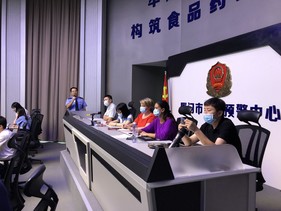 | CNO Assistant Country Director Jennifer Mathern, center, in red. This latest food safety project will be put up for a vote of the World Bank's board of directors on March 25. If the project is approved by the board, it is expected to last for five years. | |  The Dear International Colleague Letter (DICL) is a letter sent via email to a list-serve of about 20,000 subscribers – both DC-based embassies and international stakeholders. The DICL is intended to inform these stakeholders of any FDA announcements that are relevant to an audience with international interests. Here are the most recent DICLs: November 18-24 World Antimicrobial Awareness Week Don't Forget OGPS maintains a Twitter account. Please follow us @FDA_Global. Connect with Us Read thought-provoking pieces covering international topics in From A Global Perspective. Subscribe Don't miss out on future Global Monthly Updates or other international news from OGPS. To sign up, click "Manage Subscriptions" below then follow the prompts and select the "International Programs" box. | | | | |
No comments:
Post a Comment